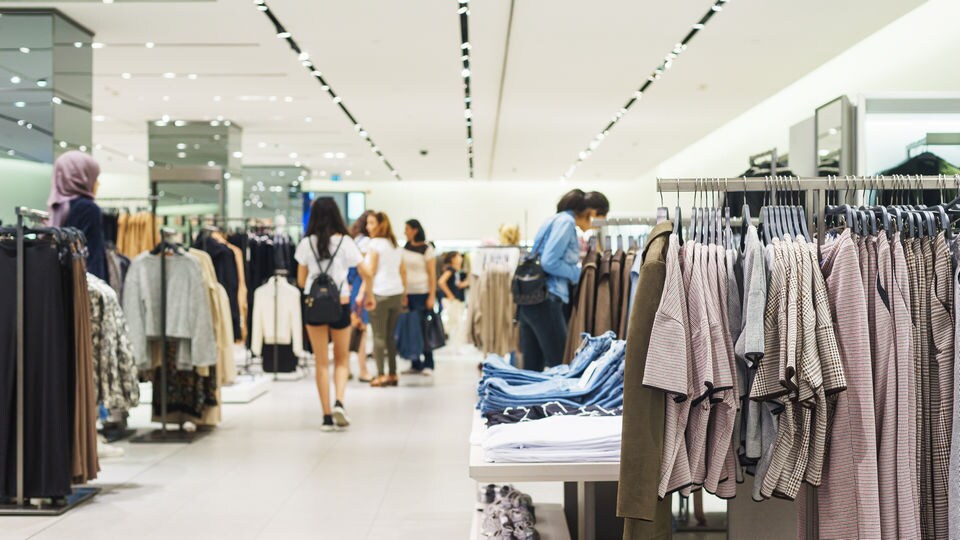Article
Today's Retail Revolution: Key Takeaways from Shoptalk 2022

From omnichannel challenges to the rise of retail-as-media and more, here are the key takeaways we learned at Shoptalk 2022.
It's been three years since the last in-person Shoptalk event, but with the pandemic seemingly on the wane, one of retail's biggest events finally reconvened in March. It was great to see so many of our industry peers and thought leaders in one place again — and it was even better to learn that the takeaways were all good news for retailers.
Let's look at three key takeaways from Shoptalk 2022, along with what they mean for retailers of every stripe.
1. Brick and mortar now sits at the core of omnichannel retail
Not long ago, the industry was still trying to figure out how digital retail and brick and mortar could work in concert. Then, a global pandemic forced the industry to figure it out — quite literally overnight.
After more than two years of innovation and iteration, retailers thriving in today's marketplace know that, rather than making brick and mortar obsolete, omnichannel's made physical stores more important than ever before.
Why?
The data shows us that customers want to shop in stores and online, depending on their preferences and needs. They've come to view the store as the nucleus of the retail experience, a hub from which they can browse, experiment with new products, pick up online orders or drop off returns. In other words, the physical store doesn't exist outside the omnichannel experience — it sits at its core.
That's great news for brick-and-mortar stores and the shopping malls or centers that host them. Even more good news: By the end of 2021, according to historical data made available by the U.S. Census Bureau, retail sales performance had improved by more than 19% versus the previous year. But as we heard from many leading brands at Shoptalk, when shoppers finally returned to stores, they didn't necessarily bring their old preferences back with them.
Take loyalty — or lack thereof — for example. Perhaps it was consumers' need to look at multiple retailers to find the products they needed during the pandemic, but today's shopper is only loyal to one thing: convenience. If it's not in stock in the size and color they need or want when they need or want it, they'll shop elsewhere without hesitation.
The same is true when it comes to omnichannel shopping. If your omnichannel experience isn't as frictionless as possible, expect to lose customers well before they reach checkout, whether it's in store or online. This applies to returns, as well. In a perfect world, returns should be just as easy and seamless as a purchase.
What it means for retailers
Speed, convenience, and a seamless experience all hinge on item-level inventory accuracy. Without it, retailers can't offer omnichannel experiences that don't risk disappointing shoppers due to out-of-stocks or shortages. Nor can they accurately forecast demand and order inventory accordingly.
Loss prevention plays a role here, as well. Without the ability to know precisely what went out the door at the item level, considerable risks apply: poor experiences, eroded loyalty, and lost revenue.
“…the physical store doesn't exist outside the omnichannel experience — it sits at its core.”
Pete McCall, senior manager, Retail Consulting Practice at Sensormatic Solutions
2. Shoppers want stores to share their values
Today's consumer is also looking for retailers who mirror their personal values, ranging from how they treat their employees to where they stand on sustainability and beyond.
Take employee health and well-being, for example. The pandemic shined a spotlight on how employers cared for their associates, especially in sectors like retail and hospitality. That spotlight hasn't dimmed, even though we appear to be through the worst of COVID-19. In fact, consumers are more aware of and more interested in how retailers help employees maintain their health and well-being. That's why 85% of supermarkets, for example, said their employee health and well-being programs were vital when competing for customer loyalty.
The same goes for sustainability. In our recent consumer sentiment survey on sustainable retail, 81% of shoppers told us that they are either concerned or very concerned about the environment's future, and with 49% claiming businesses — over government regulators and individual consumers — are responsible for operating sustainably. This belief impacts shopping habits, as 53% said they'd use a brand or store less frequently if they discovered that it wasn’t operating sustainably, and 18% would stop shopping with that retailer altogether.
This trend extends to issues with social justice and racial equity, as well. That's partially why, in 2020, Nike announced a four-year, $40 million investment in these areas, while Target appropriately worked to increase the diversity of its leadership.
What it means for retailers
How you treat associates and where you stand on sustainability, the environment, and issues of social justice are just as important to today's consumers as the goods you sell. In short, retailers and retail brands today need to stand for something and communicate that stance to the consumer effectively — or risk losing them altogether.
“How you treat associates and where you stand on sustainability, the environment, and issues of social justice are just as important to today's consumers as the goods you sell.”
Pete McCall, senior manager, Retail Consulting Practice at Sensormatic Solutions
3. Retailers are diversifying through media and data
Retailers have been advertising since time immemorial, but today, more and more retailers are becoming advertisers themselves. In fact, brands like Kroger, Dollar Tree, Kohls, Best Buy, Lowes, and CVS have recently launched retail media networks. Meanwhile, Amazon recently announced that it sold $31.1 billion in ads on its platform in 2021 — making it a bigger advertising platform than YouTube.
While these ad networks operate largely online, there's also an in-store component, with screens set up at egress points or places where shoppers often linger, like fitting rooms or even gas pumps.
The reasons for this sudden adoption of the retail-as-media model are many, but two revenue-inspired factors loom largest.
- Risk mitigation: As the pandemic clearly demonstrated, the retail landscape can change in an instant, so developing multiple revenue streams is a no-brainer. Plus, it's far easier to profit from selling ads than selling goods, making media plays low-risk revenue streams to implement.
- The growing value of first-party data: As data privacy laws become more restrictive and the internet moves toward the end of the "cookie era," owners of first-party data are increasingly being courted by marketers and advertisers. Retailers already have reams of this data throughout the sales cycle, from impression- to visit-level data all the way through to the purchase and abandonment stages — and collecting even more proprietary data through ad networks gives retailers yet another valuable revenue stream.
One of the savviest media plays combines both factors not just to drive revenue, but also to build customer loyalty and brand awareness. That's the GameChanger app by Dick's Sporting Goods. When they bought the app in 2016, it was little more than a scoring app for baseball and softball. Now, GameChanger offers scheduling, streaming, scoring, and even team management for 19 different sports.
Not only is GameChanger valuable for Dick's target audience, but it’s also incredibly valuable for Dick's. After all, the retailer can now collect data on a given sport's popularity by geography and age range, among other things, and use that data to make decisions regarding marketing, advertising, and even inventory. While there's no clear indicator this data is being sold to third parties, it could carry an immense price tag should they decide to do so.
What it means for retailers
The world of retail is evolving far beyond just the transaction at the register or the checkout screen. Smart retailers are building ad networks and leveraging users' data to target them with more personalized advertising and promotions. Some are also monetizing that data, providing them yet another revenue stream. Where this trend will lead is anyone's guess, but developing these capabilities should be a priority for retailers that want to maximize profitability and maintain relevance in the years to come.
“Smart retailers are building ad networks and leveraging users' data to target them with more accurate advertising and promotions.”
Pete McCall, senior manager, Retail Consulting Practice at Sensormatic Solutions
Learn More
Want more expert insight into the retail revolution and how to leverage the moment for your business? Reach out and schedule your retail consulting discovery call today.
About Pete McCall

Pete McCall leads the Retail Consulting Practice for the Americas and EMEA regions at Sensormatic Solutions. He and his team partner with retailers and property operators alike to identify sales and profit focused opportunities. Before joining Sensormatic Solutions, Pete held a variety of store and district leadership roles for Macy’s during his 20-plus year tenure.
Explore Related Topics

